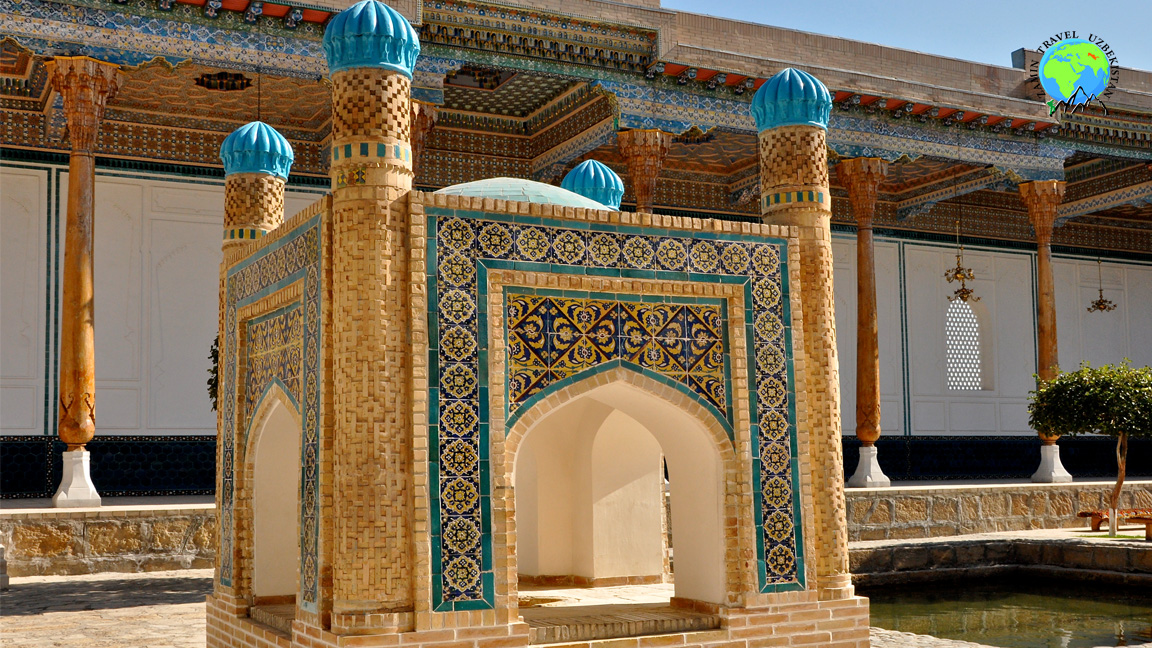


In the suburbs of Bukhara, stands an architectural monument of the great Sufi master, hermit and saint Sheikh Bahouddin Naqshbandi, who made an invaluable contribution to the emergence and development of Central Asian Culture has made progressive thoughts. Naqhsbandi was born in the family of a weaver in a small village near Bukhara in 1318. He excelled in weaving patterned silk fabrics. It was not without reason that after his death he finally became known as the patron saint of craftsmen. His teachers and spiritual masters included outstanding personalities such as Hajji Samosi and Shamsiddin Mir Kulol as well as Amir Timur as confessor. After developing his own teaching, he founded the Bahouddin Naqshbandi Sufi Order, which still exists today and has gained worldwide recognition. The basic principle of the Naqshbandi teaching was the orientation according to the example of the Prophet and his co-workers. The priority of the order was the realization according to the principle of "voluntary poverty". They believed that what you earn with your hands through work gives you a meaning in life. This would give independence and freedom of thought and action. “Retirement from society, traveling at home, outwardly with people, inwardly with God” - was the Naqshbandi's motto. Sheikh Naqshbandi himself led a very modest life: he slept on a simple mat in summer and on straw in winter. To survive, he grew wheat and Asian golden beans on a small piece of land. After the death of Bahouddin Naqshbandi, who died in 1389, numerous pilgrims began to visit the tomb. He was venerated not only in Bukhara, but in the entire Islamic world up to the present day. In 1544, the Emir Abdulaziz built a dakhma platform with a carved marble fence over the saint's tomb and next to him a generous chanaka (Sufi hospice). At a later time, west of the mausoleum, a large necropolis was built by the Bukhara Emir. Each ruler tried his best to decorate his place of eternal rest. Years later, the richly decorated Muzaffarkhan Mosque and Khakim Kushbegi Mosque, with a small minaret and a madrasah, were built next to the memorial. These buildings formed a courtyard with a khauz (water basin), reflecting the picturesque Chartak structure with a dome and four arches. At the beginning of the 21st century, the complex was restored and repaired. New arches and turquoise domes were built in the traditional national style, and carved gates and pillars were installed. It is noteworthy that during the construction of the new Ayvan terrace, the foundations of a similar original construction were discovered.